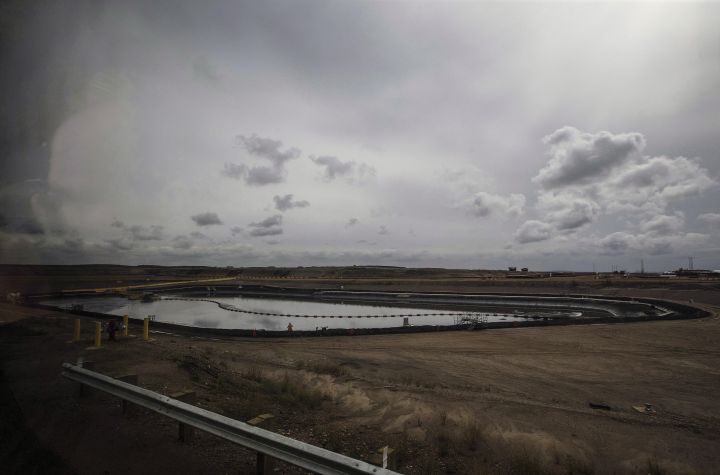An international environmental watchdog says there’s convincing evidence that oilsands tailings ponds are leaking.

“There is strong scientifically valid evidence of… seepage into near-field groundwater around tailings ponds,” says a report from the Commission on Environmental Co-operation, a body set up under the North American Free Trade Agreement.
Federal Environment Minister Jonathan Wilkinson said he found the conclusion “troubling.”
“The findings in the report cannot be ignored,” he said. “I absolutely take these findings to heart.”
The commission also found that Alberta and Canada aren’t working together when it comes to keeping a handle on the industry, despite numerous agreements to do so.
In 2017, the commission was asked by two environmental groups and a member of the K’ahsho Got’ine Dene First Nation in the Northwest Territories to look into whether Canada had done enough to investigate seepage from the ponds and if Fisheries Act water protections were being ignored.
READ MORE: NAFTA members consider environmental investigation into Canada’s oilsands tailings
The act forbids releasing any “deleterious” substance into water that may contain fish.
Bitumen residue has always been found in northern Alberta’s Athabasca River, its tributaries and area groundwater.
Both Environment Canada and industry have long contended it’s impossible to tell whether that residue is from industry or natural. Alberta’s acting Chief Scientist Garry Scrimgeour suggested that may still be the case.
“I’m not sure if we’re at a point where we’d be able to discriminate the two types of materials,” he said.

Get daily National news
“It’s fresh off the press and we need to take the time to review it and then we need to take the time to digest it. It’s going to take an appropriate amount of time.”
The commission, relying on years of peer-reviewed research as well as international experts, concluded that’s no longer true.
It says oilsands wastewater is seeping into both the groundwater under the tailings ponds as well as into two tributaries of the Athabasca River.
Although it says there’s inconclusive evidence of oilsands residue in the river itself, there are “indications” it has reached river sediments.
The report also draws on industry data which acknowledges seepage from the ponds.
“Data presented in the Syncrude monitoring report shows consistent evidence of seepage,” it says.
Syncrude estimated that 785,000 cubic metres of tailings pond water — enough for 314 Olympic-size swimming pools — had seeped from one of its ponds in 2017.
The commission said it couldn’t find any evidence that the federal and provincial governments were working together to stop that.
Wilkinson said Alberta and Ottawa work well together on oilsands monitoring, but there’s room for improvement.
“The tailings ponds issue needs to be addressed and that will require more enhanced co-operation and an enhanced level of urgency on the part of both governments.”
READ MORE: Alberta, Ottawa sign deal that cuts major environmental monitoring of oilsands
Scrimgeour said the two levels of government are working well together, pointing out the oilsands monitoring program is co-chaired by the provincial and federal governments.
“That’s a longstanding collaboration that runs very deeply.”
Daniel Smith, Environment Canada’s regional director for the area, said government scientists are now using technology that enables them to track oilsands contamination to its source and are analyzing samples taken in 2019.
Dale Marshall of Environmental Defence, one of the groups that brought the original complaint, said the report vindicated its concerns.
He said the lack of co-operation between Edmonton and Ottawa has meant enforcement has “fallen through the cracks.”
He wants to see action right away.
“I don’t know what else we need,” he said, pointing out the industry’s own data suggests the law is being broken.
“The federal government has all the evidence it needs,” he said. “Just do something about it.”
Watch below: (From April 2020) Environment and Parks Minister Jason Nixon provided an update Wednesday on the flooding both in the Fort McMurray area to the northeast and Fort Vermilion in the northwestern Peace River region, confirming no tailings ponds have been affected and water levels are dropping.








Comments